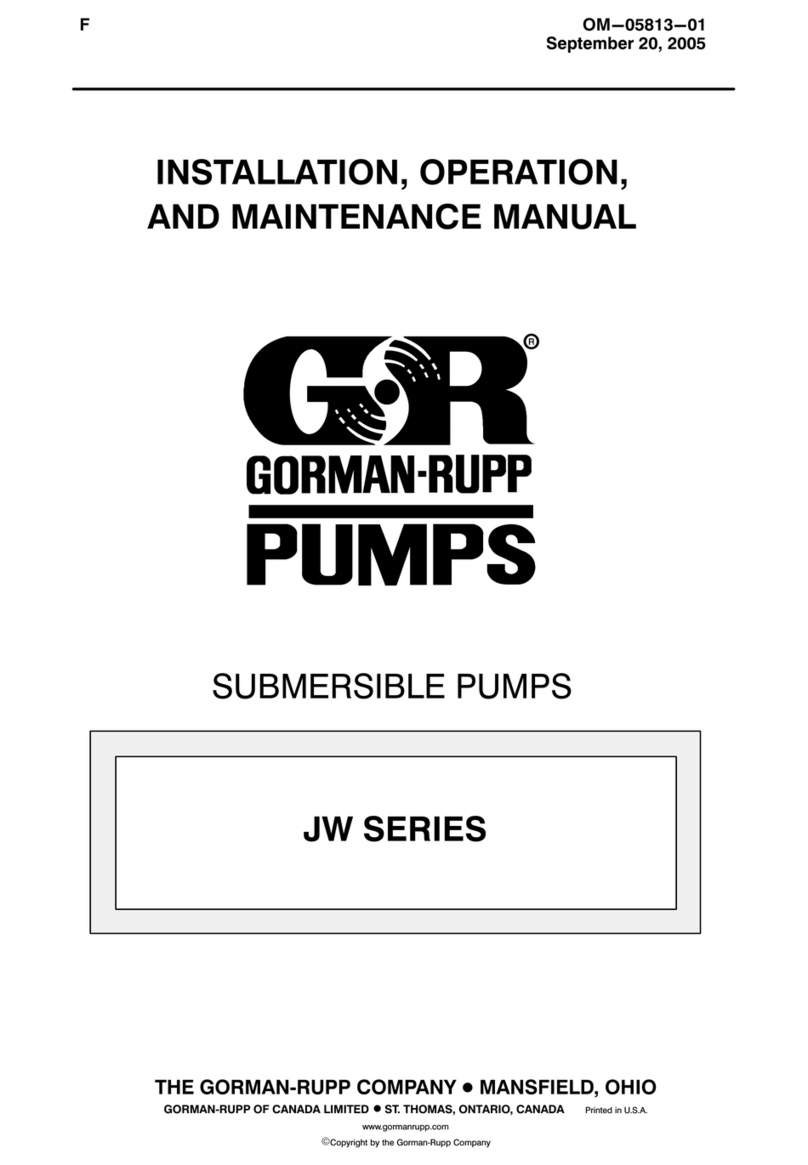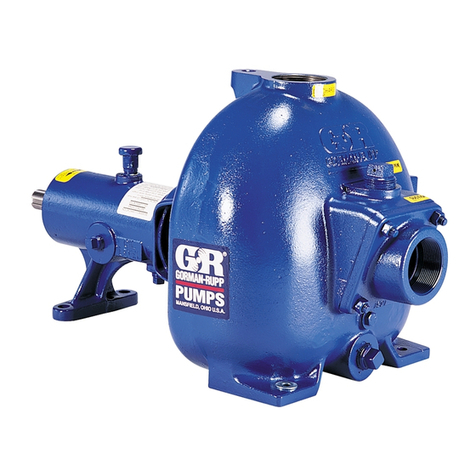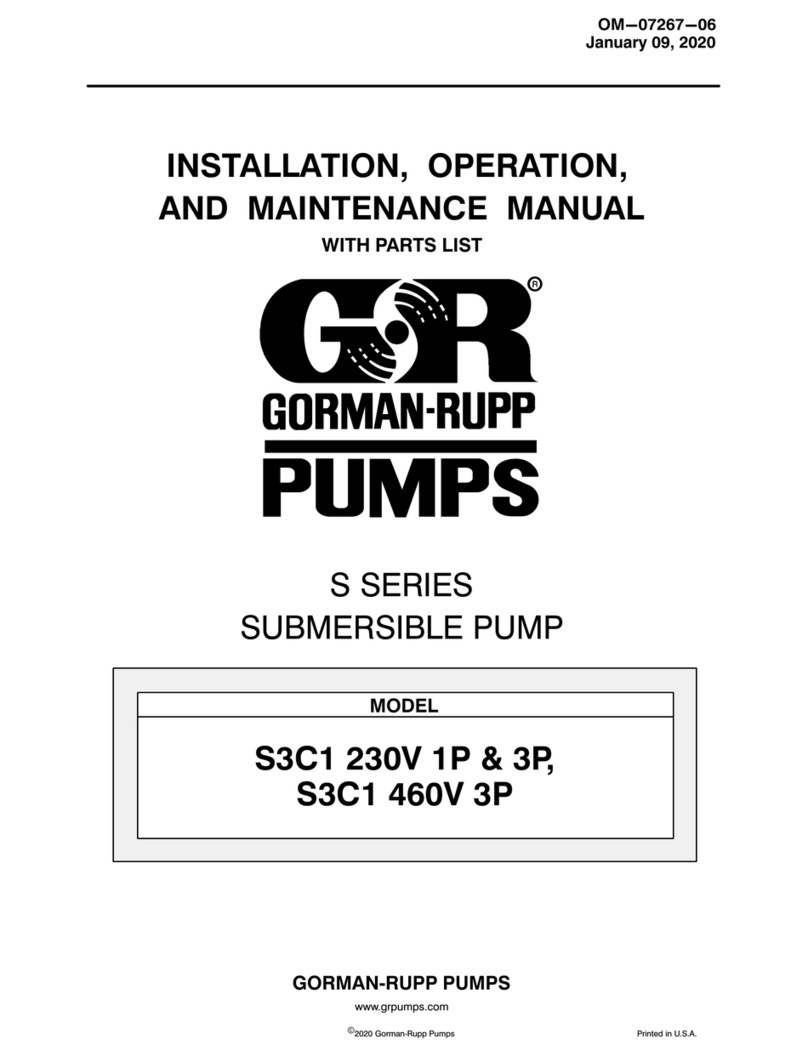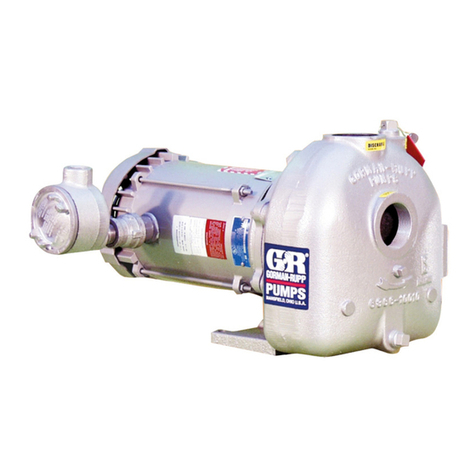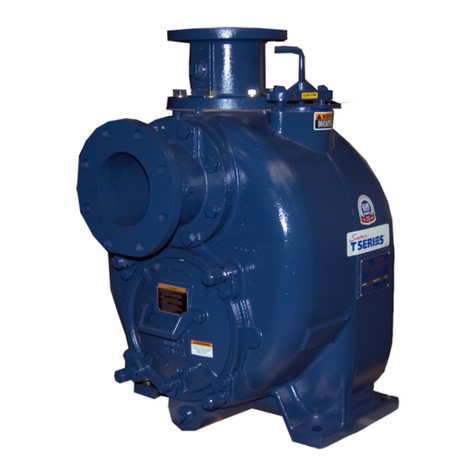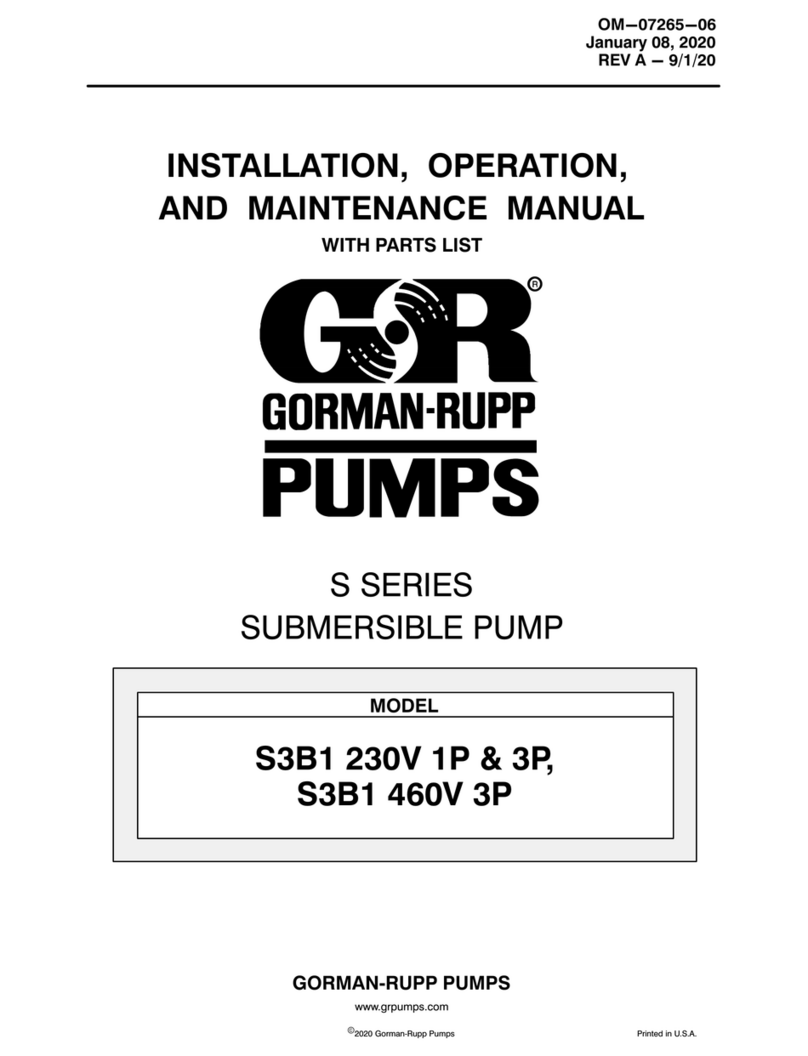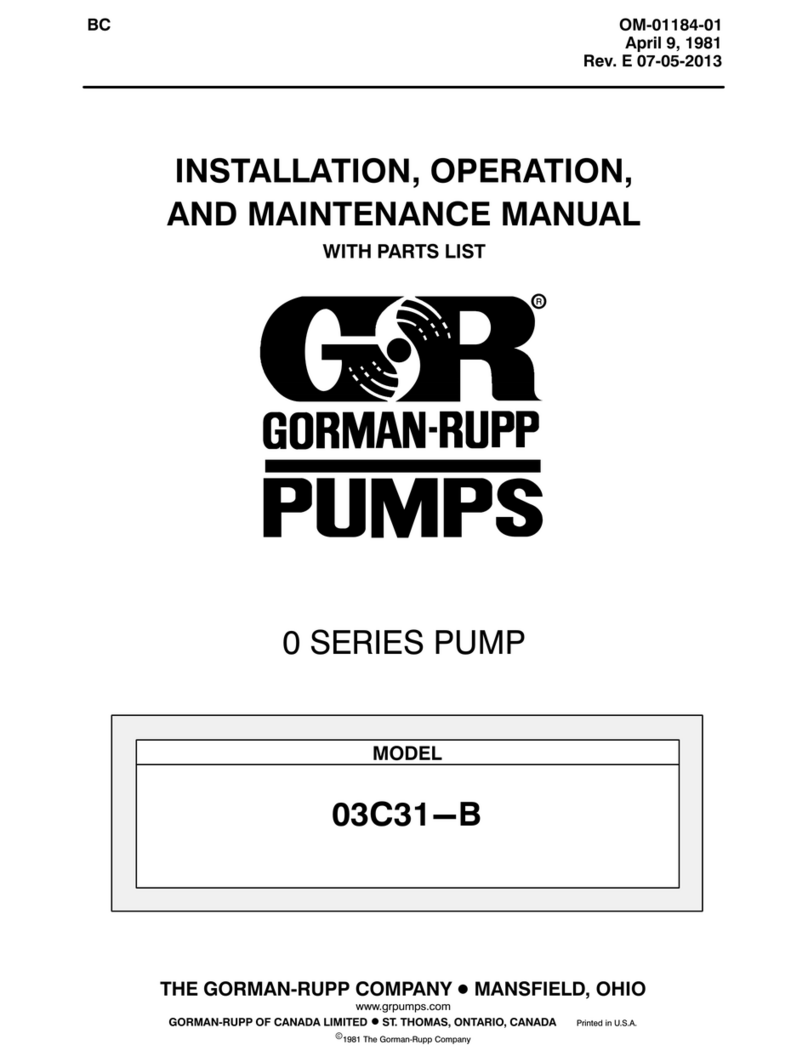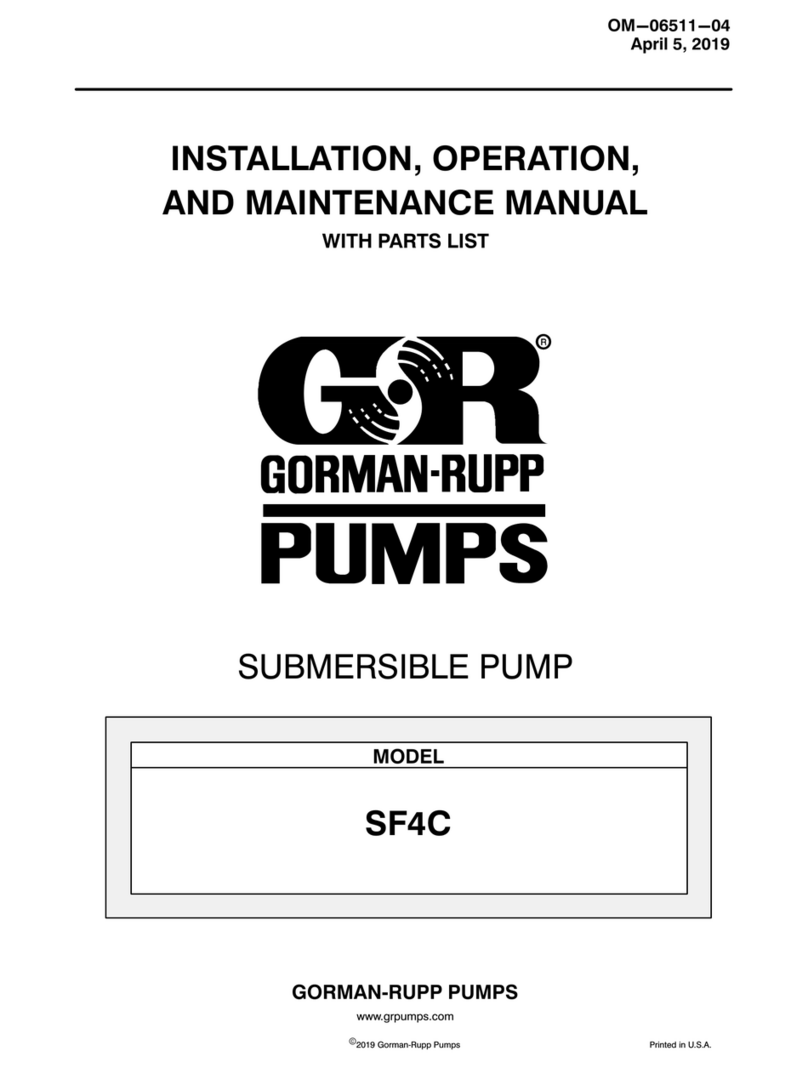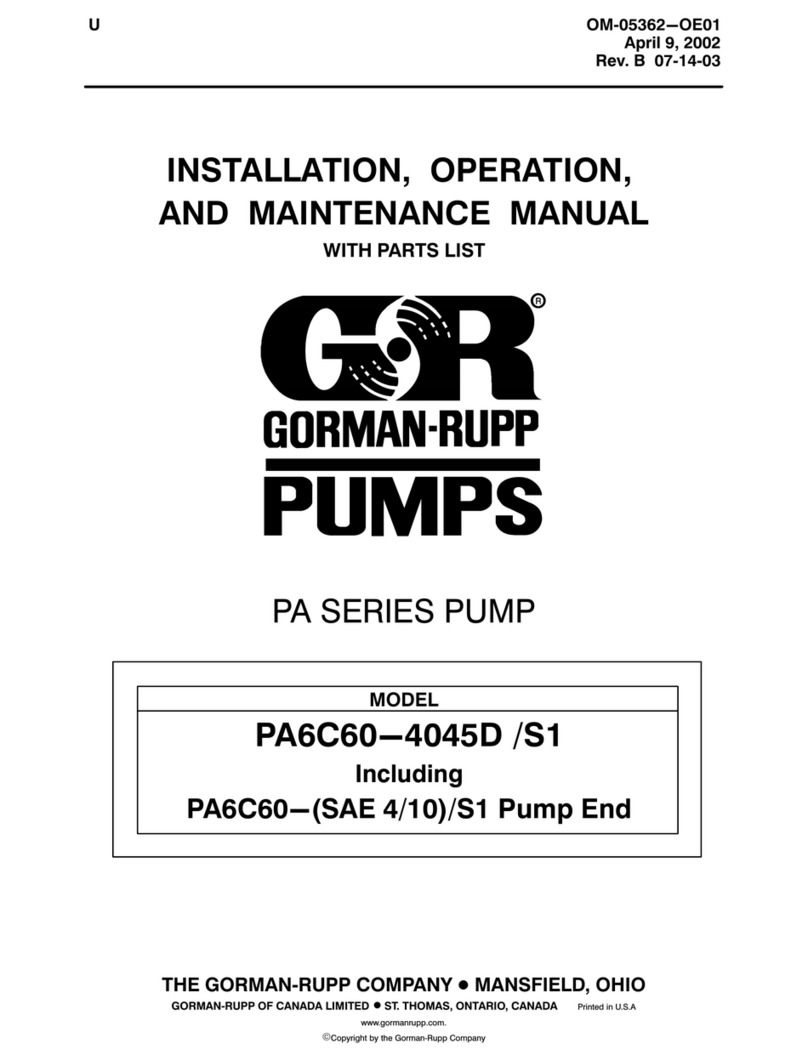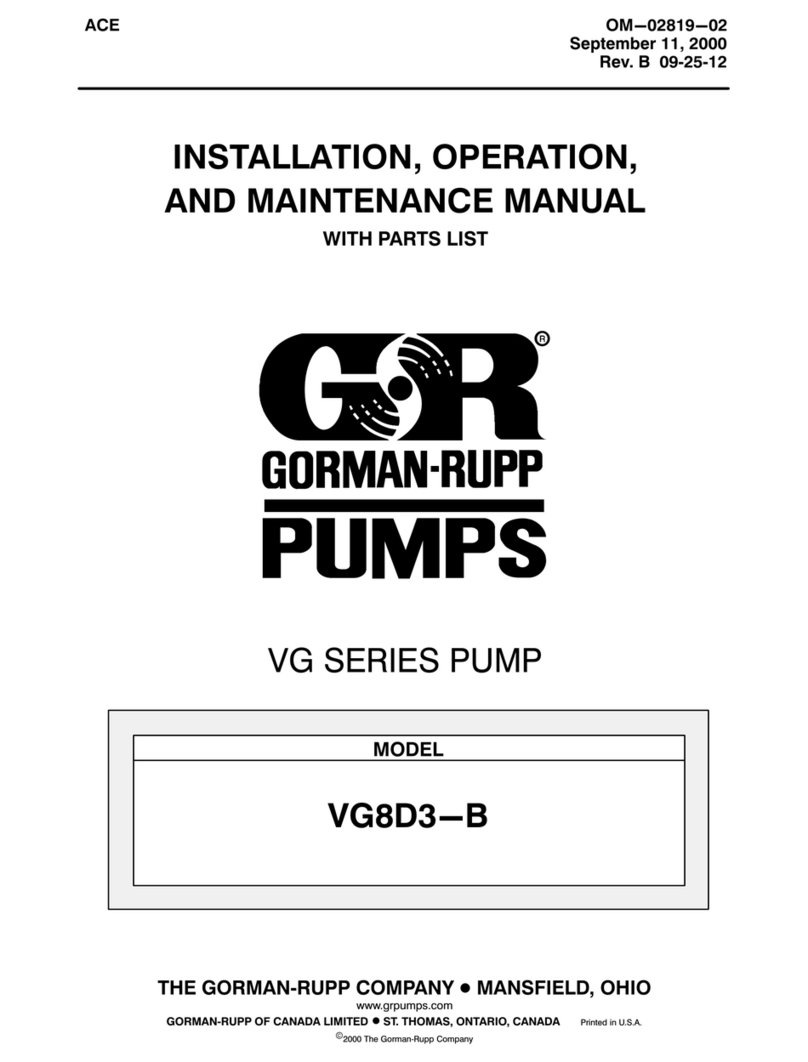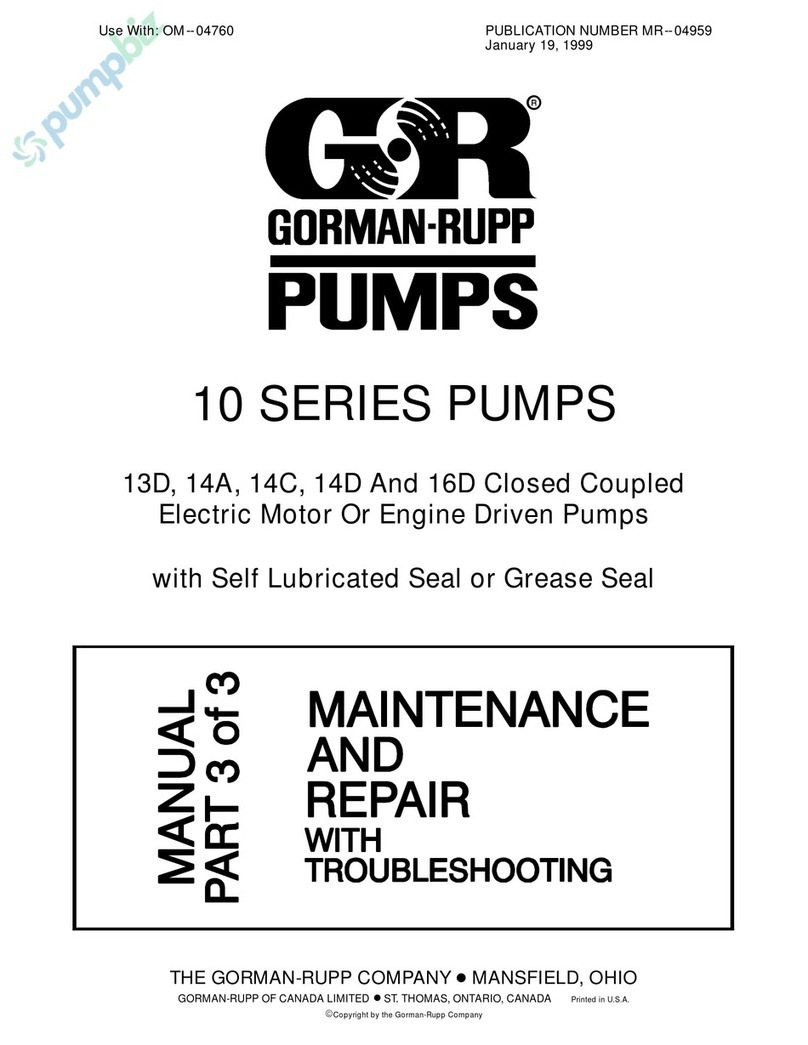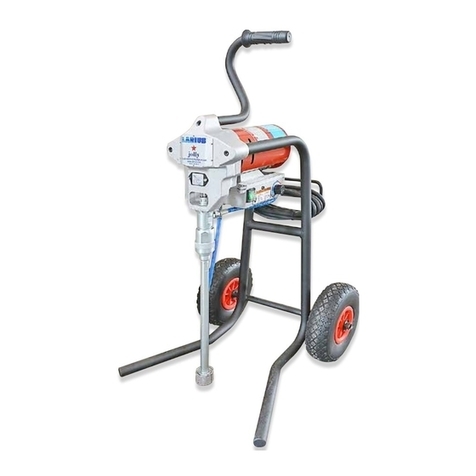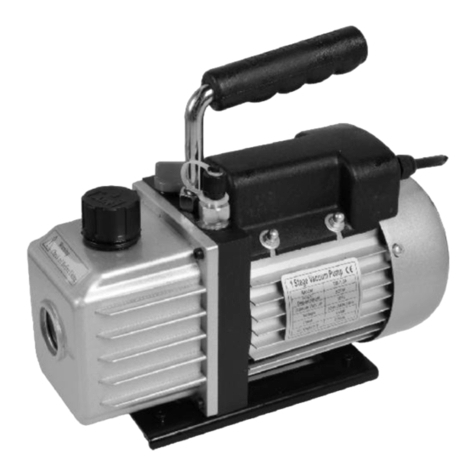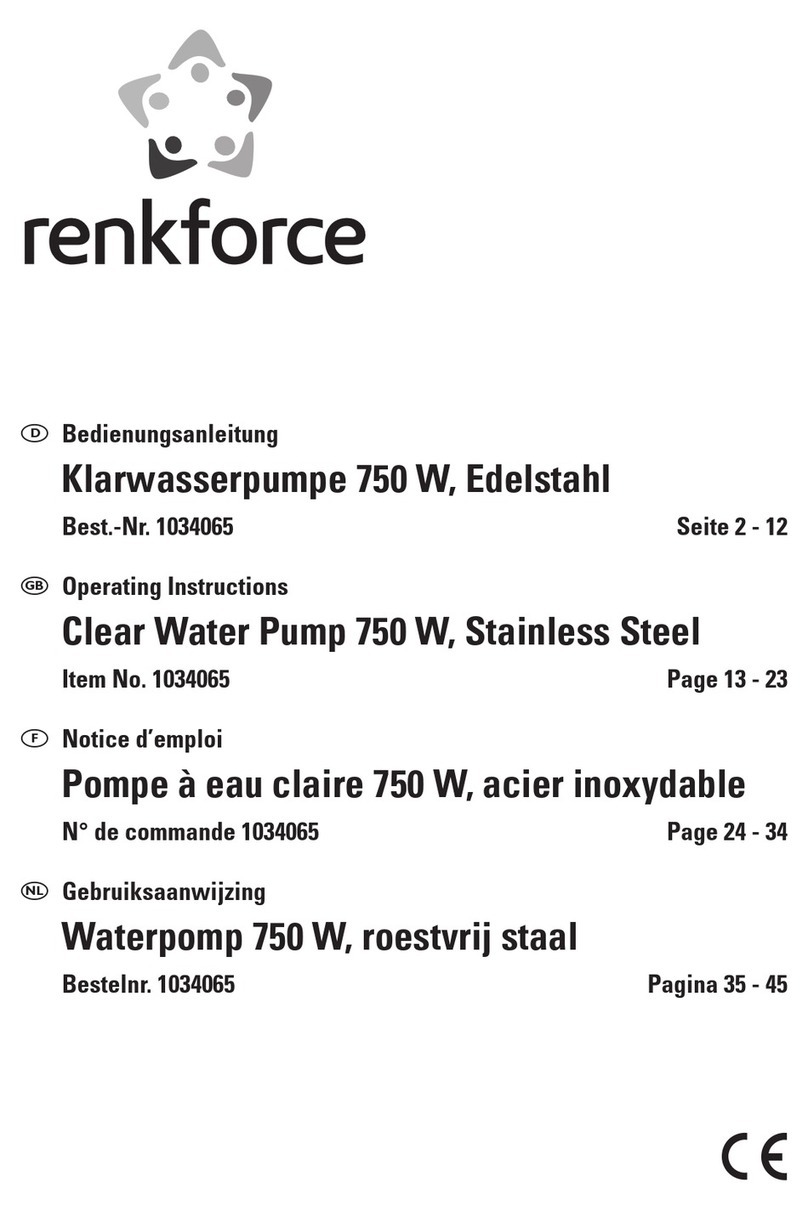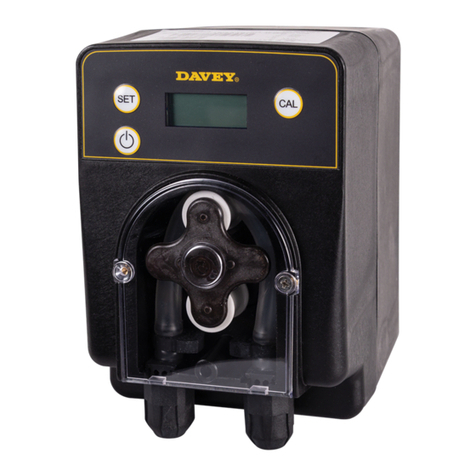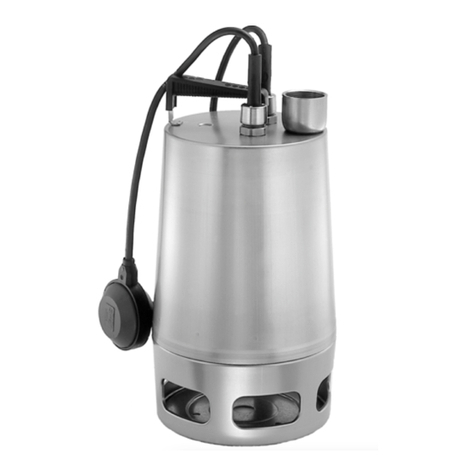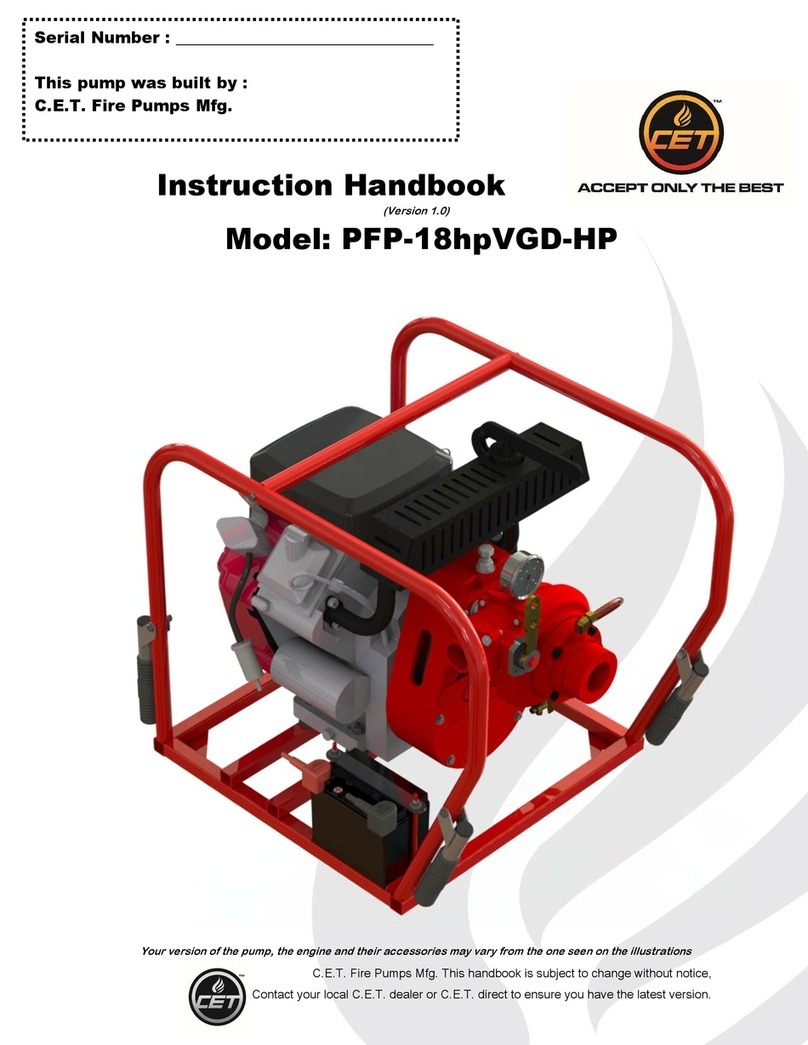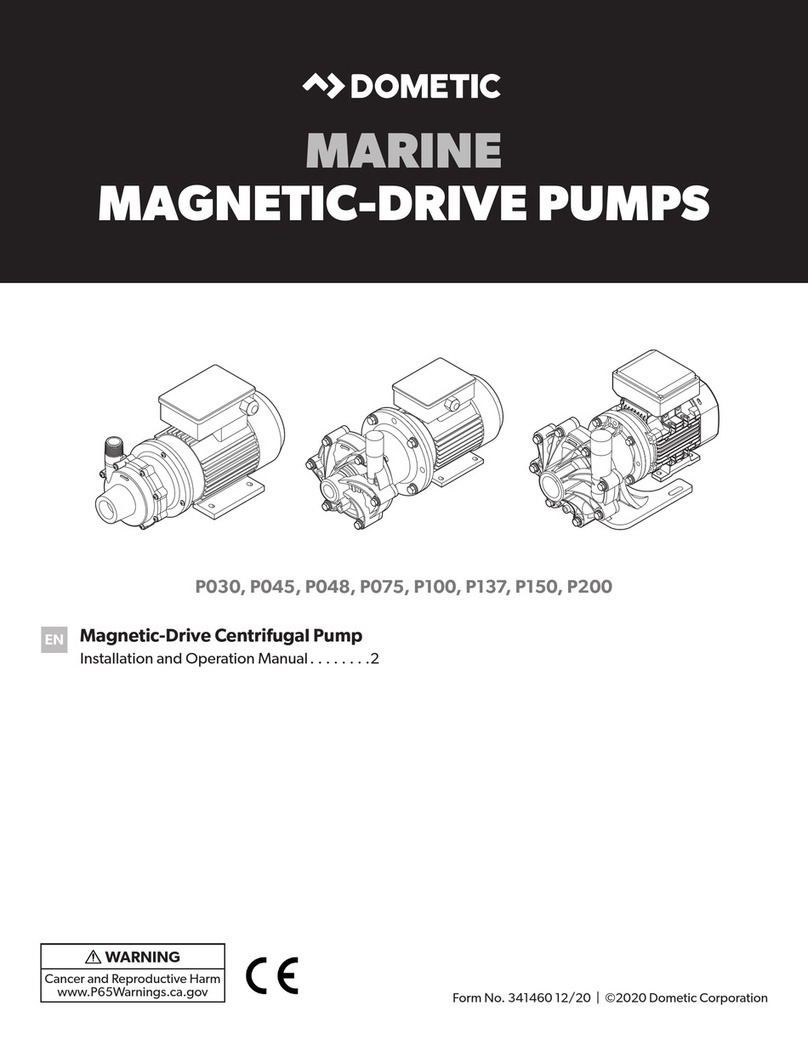
USERIES OM--03200
OPERATION PAGE C -- 3
move plates, covers, gauges, orfittings
from an over-heated pump. Liquid with-
in the pump can reach boiling tempera-
tures, and vapor pressure within the
pump can cause parts being disen-
gaged to be ejected with greatforce.Af-
ter the pump cools, drainthe liquidfrom
the pump by removing the casing drain
plug. Use caution when removing the
plug to prevent injury to personnel from
hot liquid.
As asafeguard against rupture or explosion dueto
heat, this pump is equipped with a pressure relief
valve which will open if vapor pressure within the
pumpcasingreachesacriticalpoint.Ifoverheating
does occur, stop the pump immediately and allow
it to cool before servicing it. Approach any over-
heated pump cautiously. It is recommended that
the pressure relief valve assembly be replaced at
each overhaul, or any time the pump casing over-
heats and activates the valve. Never replace this
valve with a substitute which has not been speci-
fied or provided by the Gorman-Rupp Company.
Strainer Check
If a suction strainer has been shipped with the
pump or installed by the user, check the strainer
regularly, and clean it as necessary. The strainer
shouldalsobecheckedifpumpflowratebeginsto
drop. If a vacuum suction gauge has been in-
stalled, monitor and record the readings regularly
to detect strainer blockage.
Never introduce air or steam pressure into the
pump casing or piping to remove a blockage. This
could result in personal injury or damage to the
equipment. If backflushing is absolutely neces-
sary, liquid pressure must be limited to 50% of the
maximum permissible operating pressure shown
on the pump performance curve.
Pump Vacuum Check
Withthepumpinoperative,installavacuumgauge
in the system, using pipe dope on the threads.
Block the suction line and start thepump. At oper-
ating speed the pump should pull a vacuum of 20
inches (508,0 mm) or more of mercury. If it does
not, check for air leaks in the seal, gasket, or dis-
charge valve.
Openthesuctionline,andreadthevacuumgauge
with the pump primed and at operation speed.
Shut off the pump. The vacuumgauge reading will
immediately drop proportionate to static suction
lift,andshouldthenstabilize.Ifthevacuumreading
falls off rapidly after stabilization, an air leak exists.
Before checking for the source of the leak, check
the point of installation of the vacuum gauge.
STOPPING
Never halt the flow of liquid suddenly. If the liquid
being pumped is stopped abruptly, damaging
shock waves can be transmitted to the pump and
piping system. Close all connecting valves slowly.
On engine driven pumps, reduce the throttle
speedslowlyandallowtheenginetoidlebrieflybe-
fore stopping.
Iftheapplicationinvolvesa highdischarge
head, gradually close the discharge
throttling valve before stopping the pump.
After stopping the pump, lock out or disconnect
the power source to ensure that the pump will re-
main inoperative.
Cold Weather Preservation
In below freezing conditions, drain the pump to
prevent damage from freezing. Be sure to remove
both the casing and back suction cover drain
plugswhendrainingthepump. Also,cleanoutany
solids by flushing with a hose. Operate the pump
for approximately one minute; this will remove any
remaining liquid that could freeze the pump rotat-
ing parts. If the pump will be idle for more than a
few hours, or if it has been pumping liquids con-
taining a large amount of solids, drain the pump,
and flush it thoroughly with clean water. Toprevent




















